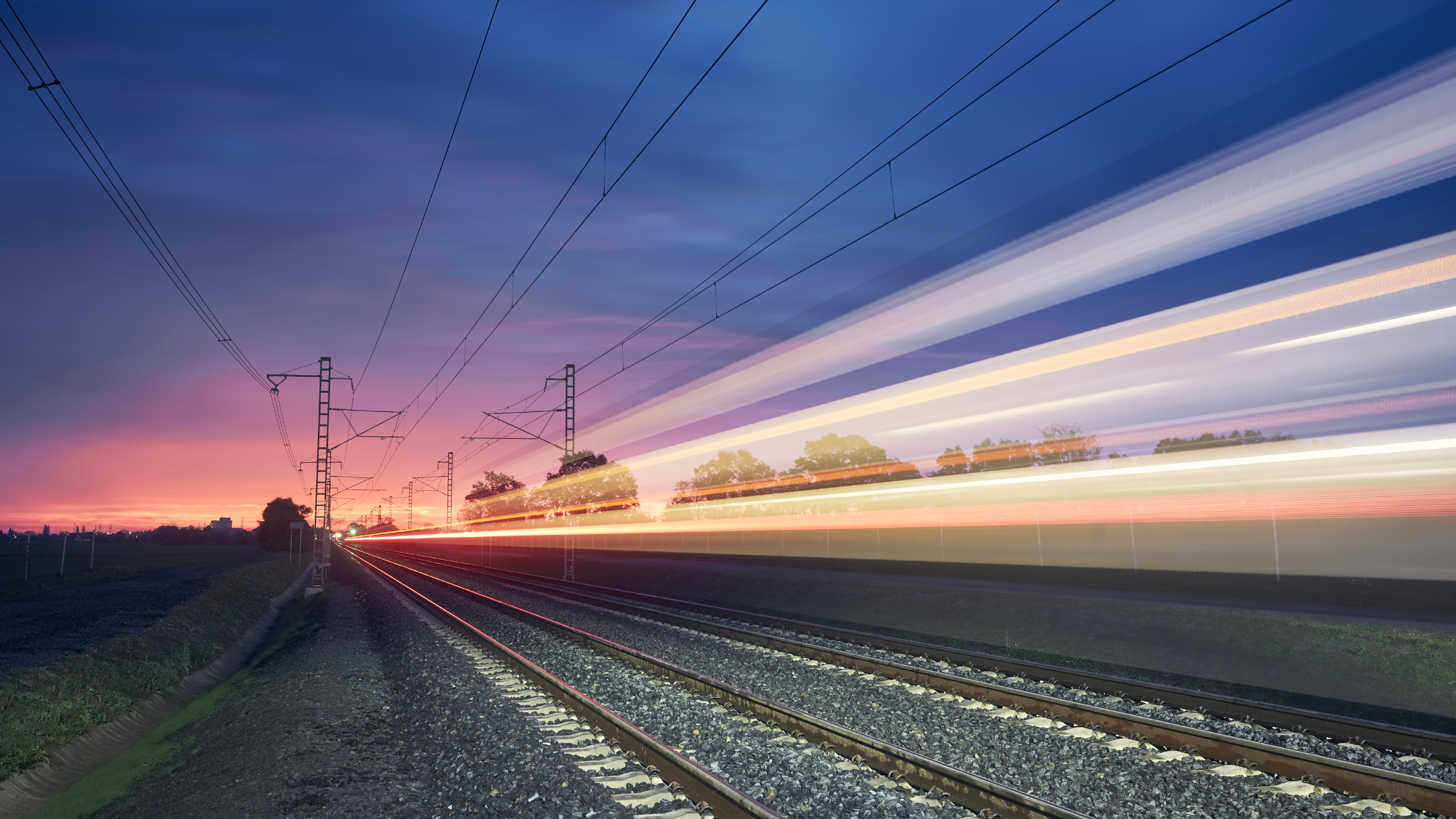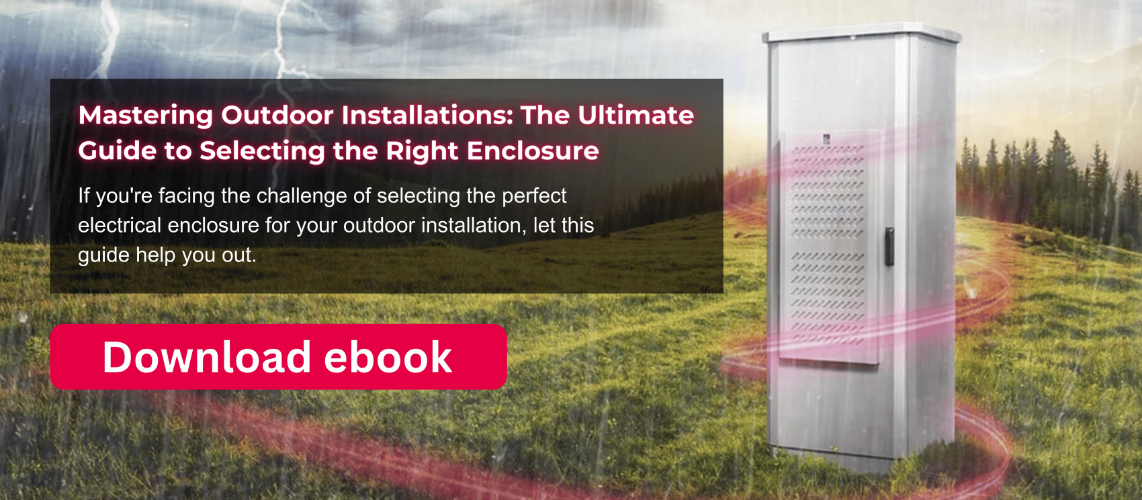
Transforming the UK's Railways: IT Infrastructure, Modern Enclosures and Sustainability
The UK railways, a cornerstone of our national transport network, are at a critical juncture. Rapidly increasing passenger numbers (since the 1990s, the number of passengers making railway journeys in Britain has doubled) means there is an urgent need for greater capacity, improved efficiency and reliability. Ageing infrastructure is being upgraded, and central to this is the integration of more advanced digital technologies.
Digital Transformation as a Catalyst for Change
Digital technologies have the potential to deliver major performance and productivity improvements for the railway sector. These improvements range from the use of intelligent signalling and telecoms systems to improved train controls, traffic management, station information and security systems, and customer information systems, alongside which will be augmented, data-driven oversight and management.
High-speed data networks, advanced analytics, and automation are poised to revolutionise railway operations, enhancing passenger safety, network capacity, and overall efficiency.
But it’s not just technology at the trackside and in stations that is being transformed. Data centres or ‘comms rooms’ are vital for the smooth running of the railways, processing, managing, and storing vast amounts of data, from ticketing, to train scheduling. Placing these comms rooms at or near the point where the data is generated helps to avoid latency and supports faster real-time data processing, which is why the railway companies have been investing in modular and deployable IT infrastructure, to put IT equipment closer to the infrastructure which it controls in as short a time as possible.
The Critical Role of Enclosures
Sophisticated and sensitive technology must be protected by closely controlled housings or enclosures, which can safeguard delicate electrical components and ensure that they work reliably and cost-effectively over their lifetime.
Enclosure housings must ensure that the equipment is shielded from the extremes of being sited in outdoor environments, including seasonal temperature variations, trackside vibration, and potential acts of vandalism.
A damaged or otherwise compromised enclosure can lead to IT failures, system downtime, and, in critical applications such as for signalling equipment, safety hazards. To mitigate these risks, enclosures must be designed and built to withstand environmental stresses, provide adequate thermal management, and have robust security features.
Rittal, a leading provider of enclosures and enclosure cooling products for IT and electrical equipment, is supporting the UK’s railways with enclosure solutions for station systems, signalling, telecoms, security, IT infrastructure, and more.

Enclosure Design, Material Science & Cooling
While enclosures are often made from stainless steel or galvanised steel, largely because both typically last a long time, aluminium is often a better choice to house railway IT equipment.
It is relatively cheap, and much lighter than steel, which helps speed up installation. Plus, it is less prone to cracking, and it doesn’t tend to rust, unlike steel.
There are some exceptions: for example, small remote communications or telemetry devices, relays, terminal boxes, and lighting systems can be housed in GRP enclosures, ideally with Class 2 protection (ie. insulated to 1000 volts).
Single or Double-Skinned Enclosures?
The latest generation of digital equipment also needs to be housed in double- rather than single-skinned enclosures.
One of the most important reasons is temperature control. Double-skinned enclosures are far better at reducing the impact of heat from the sun (solar gain). In fact, the difference in the internal temperature between double- and single-skinned housing can be as much as 15oC, and this difference can dramatically change the performance and efficiency of equipment, as well as increasing its lifespan.
In addition, we would always recommend that outdoor enclosures also have some form of climate management in place, whether that is passive (using louvres and filters), or active from fans or refrigeration.
It’s also worth noting that double-skinned enclosures carry far less risk of an internal build-up of condensation (water and electrical equipment don’t tend to mix well!)
Safety and the Railways
Safety is paramount in the railway industry; its reputation depends upon it and while major incidents are thankfully rare, even small issues are likely to lead to delays and increased costs.
The equipment needed to ensure the safe running of the network – including surveillance cameras, access control systems and telecoms equipment - must be sufficiently protected from hazards including extreme weather and vandalism, while also being easily accessible by operatives for servicing and maintenance. This latter point is particularly important when it comes to trackside enclosures. These should be designed to allow for quick installation and rapid maintenance access to reduce the potential risks of having staff working next to the tracks. Rittal enclosures are particularly well-suited to this kind of challenging environment, because they are made from lightweight materials, to allow for easy manoeuvrability, and their modular designs mean they can be rapidly set up.
We have mentioned the importance of thermal management in relation to solar gain. However, electronic components themselves generate considerable amounts of heat which, if not dissipated effectively, can compromise their performance and even lead to equipment failure. Again, this can be heavily influenced by the choice of enclosure, not least its IP rating.
IP ratings indicate the level of protection an enclosure provides against the ingress of solids and liquids, but it’s important not to necessarily specify the highest IP rating in a mistaken belief that it will offer better safeguarding. But choosing to only specify, say, an IP66 rating could be detrimental in a number of ways: there are only a limited range of available enclosures; it raises issues around climate management; and it can cause issues with project deadlines and costs. In fact, it’s the combination of the IP rating and the correct enclosure design that provides the best solution for digital equipment placed outdoors.
Rittal's weatherproof outdoor enclosures have an IP55 rating which is often more than sufficient to ensure that essential equipment remains operational even in the harshest weather. Meanwhile, Rittal’s energy-efficient and IT-specific cooling solutions will maintain an optimal temperature inside the enclosures, to ensure the equipment works at its optimum performance.

Security and Vandalism Prevention
Railway IT systems, particularly those placed trackside or in stations, are often in exposed positions and very vulnerable to vandalism and theft.
To safeguard your IT systems, it’s important to place them inside enclosures that are designed to deter unauthorised access, for example, with robust locking mechanisms, impact-resistant materials, and surveillance equipment.
But that’s not all. There are other, perhaps less obvious features that are equally valuable. For example, enclosures made of interlocking, carefully configured panels can be a better choice than those built as single shells. Individual panels mean that if one or more should get damaged, they can be simply removed and replaced quickly and relatively cheaply, as opposed to a single shell which would have to be removed from site in its entirety, to be either fixed or replaced.
A Final Word…on Sustainability
In the midst of all these equipment upgrades and service enhancements, we cannot lose sight of the fact that the railway industry has a responsibility to reduce its environmental impact and lower its carbon footprint.
Energy consumption is a major concern for a number of reasons. Firstly, there is a pressing need to address legacy energy efficiency issues to help lower waste and increase productivity, particularly within older railway IT facilities and data centres. However, the latest generation of IT equipment has substantial processing power. Not only does this increase the energy demand of the componentry, it also means the heat densities within individual racks are rising steeply. This heat, as we’ve discussed, has to be removed, and this in turn is impacting on the energy consumption of climate management equipment.
If you add new servers without upgrading your cooling equipment this will mean that your existing cooling units have to work much harder. Inevitably, this leads to rise in their energy consumption, and can mean, as we’ve highlighted, a reduction in the lifetime and performance of the whole IT/cooling system.
It’s essential, therefore, for railway networks to invest in new cooling solutions alongside any IT upgrades – and the good news is, this could reduce your energy consumption. For example, Rittal’s cooling systems have been designed to be highly energy efficient; its Blue e+ product range has the highest efficiency rating of any equivalent product currently on the market with energy savings of 75% on average being achieved.
Conclusion
The digital transformation of the UK railway network presents both unique opportunities and new challenges, but by investing in robust infrastructure, including advanced digital technologies and protective enclosures, the industry can build a more efficient, reliable, and sustainable transport network.
Rittal, is proud to be a strategic partner to the sector, providing world-class enclosure solutions that safeguard the heart of the network. By adopting a holistic approach to the protection of critical digital equipment - one that considers material science, thermal management, IP ratings, security, and specific design enclosure features - Rittal is helping to ensure the long-term performance and reliability of the railway’s key infrastructure.



